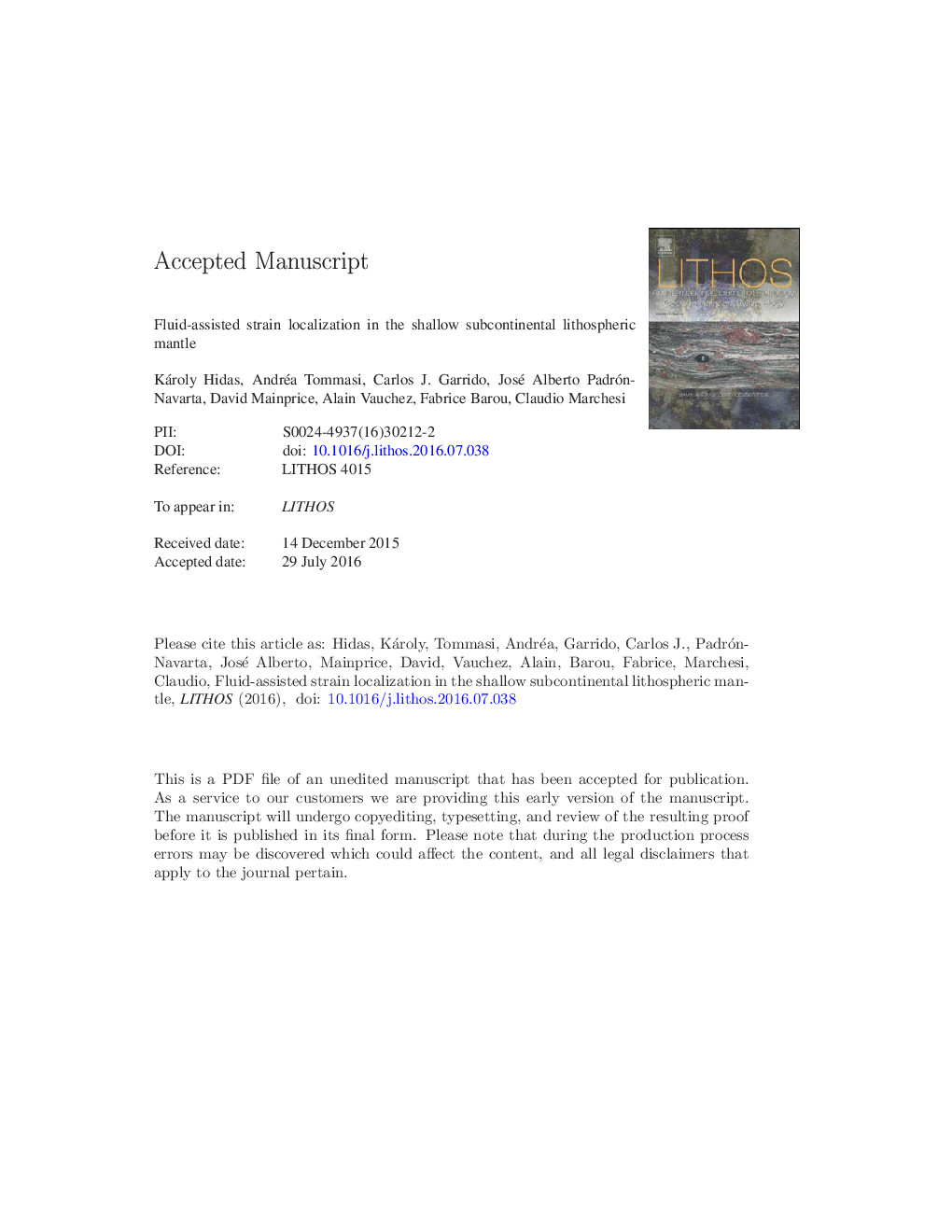| کد مقاله | کد نشریه | سال انتشار | مقاله انگلیسی | نسخه تمام متن |
|---|---|---|---|---|
| 6440525 | 1638642 | 2016 | 65 صفحه PDF | دانلود رایگان |
عنوان انگلیسی مقاله ISI
Fluid-assisted strain localization in the shallow subcontinental lithospheric mantle
ترجمه فارسی عنوان
محلی سازی کششی کمک به مایع در گوشته کم عمق مایع لاتوسفیری
دانلود مقاله + سفارش ترجمه
دانلود مقاله ISI انگلیسی
رایگان برای ایرانیان
کلمات کلیدی
محلی سازی فشار، مایع خزش ریختگی، منطقه برشی، مانت لیتسفریک، ماسه رندا پریدوتیت،
موضوعات مرتبط
مهندسی و علوم پایه
علوم زمین و سیارات
ژئوشیمی و پترولوژی
چکیده انگلیسی
We report microstructural evidence for fluid-assisted ductile strain localization in a â¤Â 50 m-wide mylonitic-ultramylonitic shear zone in the Ronda Peridotite massif, Southern Spain. Strain localization occurred at relatively low pressure (< 0.8 GPa) and moderate temperature (750-1000 °C). Initial deformation by dislocation creep resulted in formation of mylonites. Focusing of aqueous fluids in the shear zone favored the activation of dissolution-precipitation creep, resulting in further strain localization. This process is recorded by two generations of ultramylonitic bands composed of fine-grained, well-mixed olivine-orthopyroxene aggregates. Microstructural observations in the ultramylonites suggest alternating dissolution and precipitation of olivine and orthopyroxene, which may be explained by local changes in silica molality of the percolating fluid (disequilibrium and mass transfer at scales > mm). In the mylonites, olivine shows a crystal preferred orientation (CPO) coherent with dominant (001)[100] glide, probably due to the presence of interstitial fluids during deformation. In the ultramylonites, olivine CPO is weak to very weak, consistently with a decreasing contribution of dislocation creep to deformation. In contrast, fine-grained orthopyroxene in both mylonites and ultramylonites displays a clear CPO characterized by a [001] maximum normal to the foliation, which is not consistent with dislocation glide in any known slip system for orthopyroxene. We interpret this CPO as formed by oriented crystallization during dissolution-precipitation. In the present study, dissolution-precipitation creep predominates only in small-scale ultramylonite bands due to limited fluid availability and localized dynamic permeability. However, this process may be important in intermediate temperature domains of subduction zones, where it may lead to a feedback between strain localization and fluid transport.
ناشر
Database: Elsevier - ScienceDirect (ساینس دایرکت)
Journal: Lithos - Volume 262, 1 October 2016, Pages 636-650
Journal: Lithos - Volume 262, 1 October 2016, Pages 636-650
نویسندگان
Károly Hidas, Andréa Tommasi, Carlos J. Garrido, José Alberto Padrón-Navarta, David Mainprice, Alain Vauchez, Fabrice Barou, Claudio Marchesi,
